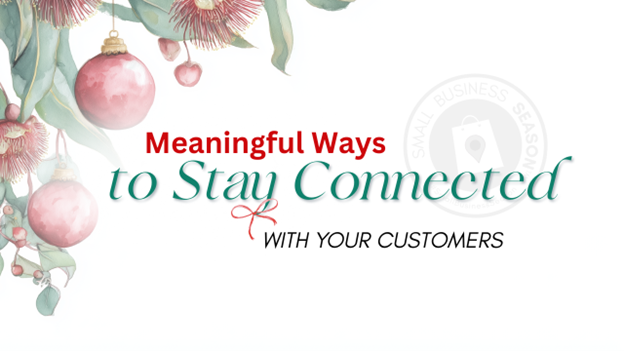Our Small Business Season Christmas Wish: Supporting Local in 2025
The holiday season always seems to bring out the best in everyone—acts of kindness, bestowing grace, being a little more patient with people. During Small Business Season, many of us consciously choose to shop local and support the small businesses that make our community unique. It’s a beautiful time where we feel the power of community.
So what if we carried that spirit with us throughout the year? It’s our Christmas wish.
But more than that, it’s part of our agenda—promoting small businesses and assisting them in gaining traction. We hope you’ll join us.
The Year of Small Business—Good for Our Community
At the beginning of every year, many people vow to do something to make their lives better or healthier. We’re asking you to do the same with us, but you needn’t give up cake or cookies to do it.
Our community’s small businesses are the heart and soul of our local economy. They are the cornerstones of our neighborhoods, supporting local jobs, contributing to community events, and fostering a sense of connection and identity. By continuing to support them all year long, we’re not just making a purchase—we’re making an investment in the vitality of our community. We’re improving its health, and doesn’t that sound good?
Why Support Small Businesses Year-Round
Some people worry it’s more expensive or inconvenient to support local businesses. But what is truly inconvenient is having to shop and dine elsewhere because our stores, restaurants, and other businesses are no longer open. Patronizing a business is a “vote” to keep them around.
Local businesses:
Keep Dollars Local
For every dollar spent at a small business, a significant portion (as much as 68%) stays in the community, supporting schools, public services, and other local initiatives. Shopping local creates a positive ripple effect that benefits everyone.
Foster Community Character
Our local businesses give our community its charm and uniqueness. When we support them, we’re preserving the character of our town and ensuring others can enjoy it, too.
Create Jobs
Small businesses are the largest employers nationwide. By supporting them, we help sustain and create local jobs, keeping our neighbors and friends employed.
Support Each Other
Many small businesses collaborate with one another, purchasing goods or services locally. When we support one business, we often support a chain of local enterprises.
Are Invested in Us
Small business owners are our neighbors. They sponsor youth sports teams, donate to local charities, and step up to support the community when it matters most. By supporting them, we’re reciprocating that commitment.
Ways to Keep the Spirit Alive Year-Round
If you’re ready to join us in our vow to shop local first, consider the following:
· Shop Local First. Before heading to big box stores or online giants, check to see if a local business offers what you need.
· Dine Local. Treat yourself to meals at local restaurants, cafes, and bakeries.
· Buy Gift Cards. Small businesses appreciate cash flow, and gift cards are a great way to share your favorites with others.
· Spread the Word. Share positive reviews online and tell your friends about great local experiences. Word of mouth is powerful.
· Attend Local Events. Many businesses participate in markets, fairs, and other community events. Show up and support them!
· Be Loyal. Build relationships with local businesses and become a regular.
Imagine the Impact
If each of us made just one small business purchase a week, it would create a significant impact on our local economy. Over time, these consistent actions could lead to exponential growth that benefits everyone.
Let’s keep the spirit of Small Business Season alive—because our community’s businesses aren’t just for the holidays. They’re here for us year-round, and they deserve (and need!) our support. Together, we can build a stronger, more vibrant local economy, one purchase at a time.
Let’s make this year the year of supporting small businesses every day. Are you in?




